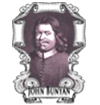Editor’s Note: Pilgrim’s Progress, the second most popular book of all time—second to only the Bible—tells the allegorical story of Christian, a pilgrim who journeys through life enduring suffering, temptations, and setbacks on his way to the Celestial City. This story, originally written to entertain and challenge the author’s children, has become a great inspiration for the millions who relate to Christian, his acquaintances, and his struggles.
Who would true valor see, let him come hither,
Here’s one will constant be, come wind come weather,
There’s no discouragement, shall make him once relent
His first avowed intent to be a pilgrim.1
Some of us were fortunate enough to have parents who read to us when we were young. It was my dear mother who understood the value of good books and read aloud to her children. As farm kids my brother and I did not grow up with all the trinkets and toys of the wealthier set, but the rich heritage of wide open spaces, wholesome living, and good literature gave us the sense that we were well-off indeed.
And woven into this wonderful tapestry of memory was Pilgrim’s Progress, the “crown jewel” of John Bunyan, “The Prince of Dreamers,” calling out from the prison dankness of the Bedford jail, “Come enter the Way, and be a pilgrim.”
Whoso beset him ‘round with dismal stories?
Do but themselves confound; his strength the more is.
No lion can him fright, he’ll with a giant fight,
But he will win the right to be a pilgrim.1
I have often asked myself what it is in Pilgrim’s Progress that seizes the mind with the kind of permanence that makes it so hard to forget. The colorful quaintness of Bunyan’s seventeenth century prose is certainly appealing, but the answer must lie elsewhere.

John Bunyan’s tomb in Bunhill Fields, London, England.
To me it was the magic found in his characters, which seemed to lay hold of my imagination in such a way that, even years later, they still claim fresh occupancy in my heart. It”s the bumblings of Simple, Sloth, and Presumption, the purity of Hopeful, the empty chatter of Obstinate and Pliable, and the pompousness of Talkative that endure with me to this day. Like old acquaintances peering out over the battlements of time, they still call down to me, “How is it with you now, pilgrim?” For you see, it is in the character of his characters where we discover the real center of this allegory.
Connected to these figures is the sobering thought of one of the later Bunyan commentators, indelibly etched on my mind, that goes something like this: “Acts often repeated settle into habits; habits indulged form character; character has a direct bearing on destiny.”
Since, Lord thou dost defend him with thy spirit,
He knows he at the end, shall life inherit.
Then fancies fly away! I’ll fear not what men may say,
But labor night and day to be a pilgrim.1
For me, one of the most memorable lessons comes out of Vanity Fair. What an incredible commentary is this chapter from Pilgrim’s Progress on the relationship between light and darkness, and good and evil. Here I learned early that there exists a world system that is no friend to God. Here I discovered that all men, from birth, love moral darkness, and that I was a willing participant in this cosmic rebellion against a good and gracious God.

John Bunyan (1628–1688) penned Pilgrim’s Progress as he sat in a Bedford jail. The Anglican church had required that preachers obtain a license after agreeing with state-approved doctrine. Bunyan would not compromise his faith and was repeatedly imprisoned for preaching without a license. Bunyan wrote several other books including Grace Abounding to the Chief of Sinners and The Holy City.
Bunyan brilliantly illustrates this universal contempt toward the God of the Bible and His followers when Christian and Faithful enter Vanity Fair. In his genius, Bunyan placed the way to the Celestial City right through the middle of the Fair. Our two pilgrims stood out because they were distinctly different from those at the Fair by way of their dress, their speech, and their interests.
Their attire was different from those around them. Their language was that of Canaan. Their focus was Heaven. One would immediately expect tolerance and acceptance toward those who are somewhat different and talk somewhat different, but such is not the case, nor can it ever be.
The lesson is clear and sobering. Those who are on their way to the Celestial City, dressed in the righteousness of Christ, speaking the language of the Bible and trafficking only in the truth are not welcome in this world. The message of Vanity Fair to the true pilgrim will always be, “Come eat with us; come buy from us; come live with us … or pay the price.”
What a lesson this was for me as a young man whose aspirations for popularity and acceptance by the crowd ran deep. Indeed, the “avowed intent to be a pilgrim” is a costly thing.
Is Pilgrim’s Progress inspired like the Bible? Certainly not. But there is no better companion to have occupying the honored place next to the Book of Books, than the work of seventeenth century Puritan, John Bunyan- Pilgrim’s Progress.
To read more about Pilgrim’s Progress and its author, John Bunyan, visit www.AnswersMagazine.com/go/pilgrim
Steve Fazekas helps schedule ministry engagements for the Answers in Genesis speakers. Having studied and taught the richness of John Bunyan’s writings for many years, Steven and his wife Melanie worked with project leader Stacia McKeever to write the All-in-One Curriculum of The Pilgrim’s Progress.